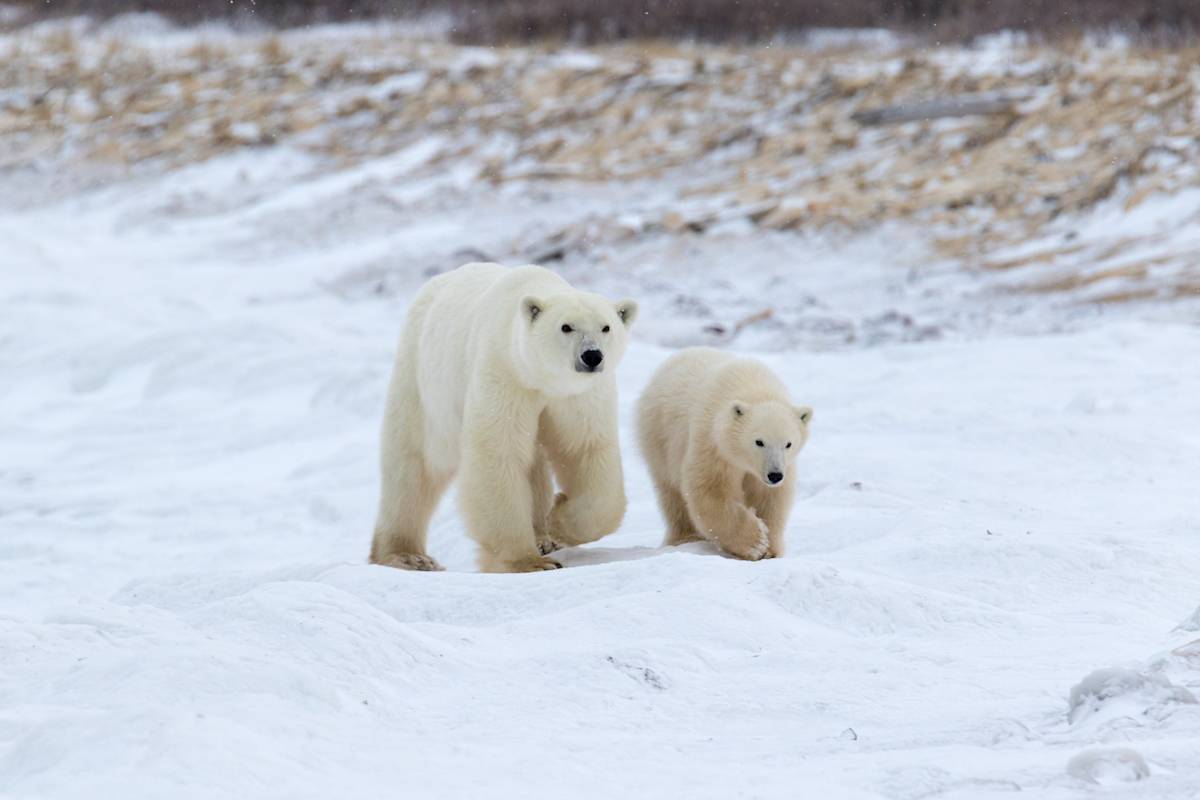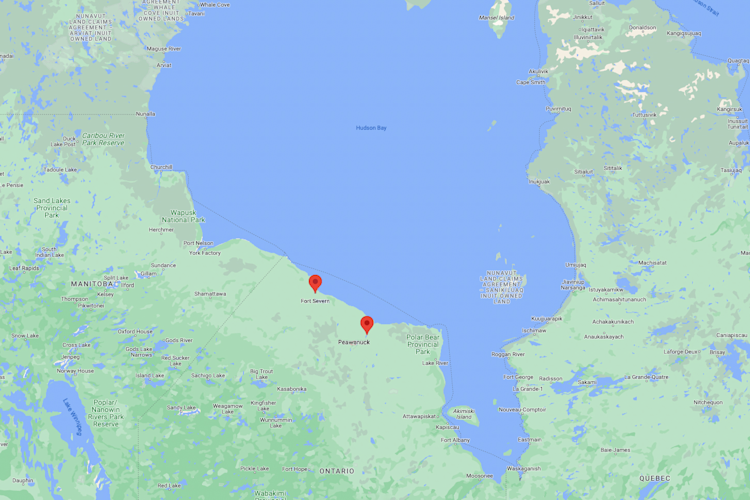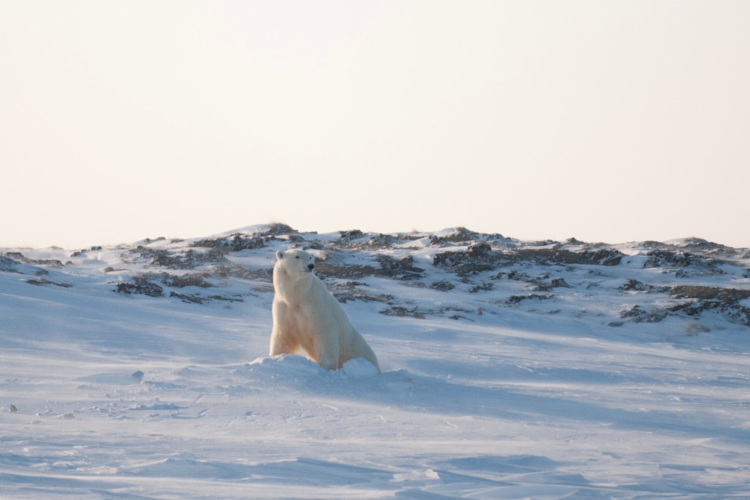Most people in the Canadian province of Ontario are likely unaware that there are polar bears in the province. Most of Ontario’s population lives in big cities in the south. Far to the northeast of those big cities, near to Hudson Bay, are Peawanuck and Fort Severn, two of Canada’s most isolated communities. Each community has a population of less than 400 people, most of them Indigenous (Cree).

Photo: Simon Gee / Polar Bears International
Polar Bears in Ontario?
By Clive Tesar, Guest Contributor
MINS
20 Sep 2023

Peawanuck and Fort Severn on the shores of Hudson Bay.
More bears sightings lead to concerns
Local people have a healthy respect for the polar bears they see onshore every year. In recent years, they have begun seeing more onshore bears, and in months when they were previously absent. Many people in the communities do not want to shoot the bears, but they are concerned about the increasing risk to people in communities and in cabins along the coast.
Polar Bears International has been working in partnership with the Government of Ontario, the Government of Canada, and York University to help communities determine how to decrease conflict with the bears. We’ve called this “The Wapusk Project,” named for the Cree word for polar bear. As part of the project, we visited the two communities in July to meet with local people, and to start a discussion on conflict reduction. The partners are keen to ensure that ideas on how to keep people and bears safer are community-driven. This is important for recognition of the rights of local Indigenous peoples, but it is also a practical consideration; experience has shown that measures backed by communities have more chance of success.
Getting into the communities is difficult. There are no roads in the summer (winter roads across the ice are available for a few weeks in winter), and the local airstrips can only accommodate small planes. Flights are few and expensive. Luckily, the partnership with the Ontario government allowed us to use one of their planes for at least part of the trip. The reality of life in the north means plans often have to be altered. In our case, the plane we were using was called away to fight a forest fire, but we were able to get a replacement to continue our travels.

Photo: Clive Tesar
A meeting in Peawanuck.
Visit to Peawanuk
Our first stop was in Peawanuck. We met with local leadership during the day, where people told us that they are seeing polar bears starting as early as mid-April, whereas in past years, they were not showing up until July. There is no organized response to bears showing up in town. As one local councilor put it, “People just converge on them.” Local leadership would like that to change, and they are hopeful that in future a dedicated bear monitor could be hired. They are also interested in getting one of the new bear traps that the project partners helped design and fund. The project partners left behind a portable electric fence kit, so that a community member could test its effectiveness in keeping bears out of cabin areas.
The community meeting later in the day was a great success. About 40 people showed up to discuss their ideas for reducing conflict. They spoke of conflict situations at their cabins, including property damage by bears, and bears attempting to enter cabins when people were present. There was a lot of interest in fencing and other perimeter measures that might discourage bears. The meeting ended with a literal bang, as people tried out some of the audible deterrents such as “bear bangers” and “screamers,” loud noisemakers that can be launched by hand-held devices.

Photo: Clive Tesar
A meeting in Fort Severn.
Visit to Fort Severn
The project team’s next stop was in Fort Severn, a community we’d visited in February to make initial contact to ensure the community would be receptive to our visit. Once again, our first meeting was at the Band Office to meet with local leaders. Fort Severn is closer to the coast than Peawanuck, so bears don’t have to go far to enter this community. the councilors we spoke to are interested in better garbage management, to better avoid attracting polar bears. They were interested in the work Polar Bears International has done together with the Churchill Bear Smart Working Group to improve garbage management there by introducing bear-resistant waste bins. They were also interested in the possibility of acquiring a live trap, and in various bear deterrents.
The community meeting in the evening drew about 30 people. It provided an opportunity to answer some misconceptions that people had about current bear management. People in these communities do not often get an opportunity to just ask government representatives about wildlife management, so the meeting helped clear the air about current management, and helped address some historical issues too. People here echoed Peawanuck’s interest in a bear monitor for a few months a year. They also appreciated a hands-on demonstration of some of the bear deterrence tools and asked the team to bring some more to distribute to people.
Polar Bears International and the rest of the Wapusk team are following up on the community feedback received and are making plans for a next trip. We will provide more resources to the communities, training in using the resources, and will ensure the best we can that the community bear safety needs are met. We hope that these first efforts will eventually spread to other Cree communities around the Bay.
Clive Tesar is a consultant for Polar Bears International, working on community-driven human-bear conflict reduction projects.
















